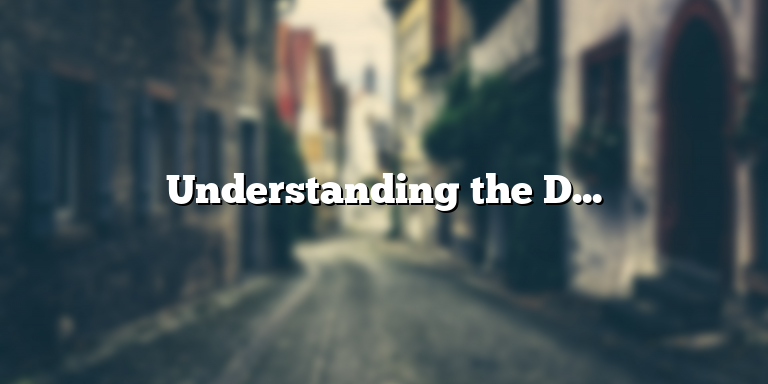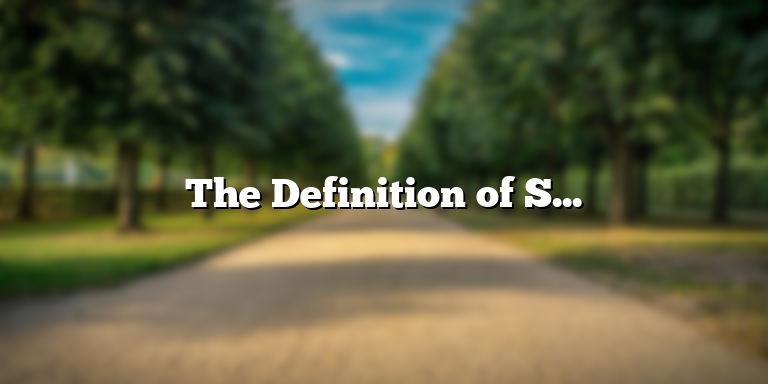
What is Hardwood Flooring?
Hardwood flooring is a popular flooring option that enhances the appearance of any space. This type of flooring comprises planks of wood milled from different hardwood tree species.
Hardwood flooring is renowned for its durability, versatility, and timeless appeal. The floors are resilient and can last for decades when installed and maintained correctly. Additionally, hardwood floors are relatively easy to clean and maintain, and they don’t trap allergens and dust, making them a suitable option for people with allergies or respiratory problems.
The most common types of hardwood flooring species available in the market include oak, cherry, maple, hickory, and ash. Other exotic hardwoods such as Brazilian Teak, Ipe, and Santos Mahogany are also widely available. Each species has its unique characteristics that distinguish it from others, including their texture, color, and grain pattern.
When shopping for hardwood flooring, the buyer has various options to choose from, including unfinished or prefinished, solid or engineered hardwood flooring. Unfinished hardwood flooring comes sanded but lacks the final finish coat. A buyer is required to apply the finish to the wood after installation. On the other hand, prefinished hardwood flooring comes already sanded and with the final finish coat. It can be installed and used immediately after purchase.
Solid hardwood flooring comprises solid planks of wood milled from one species of hardwood. It is typically installed by nailing down planks onto a plywood subfloor or attaching it to adhesive. Engineered hardwood flooring, however, is a hybrid product comprising of a top layer of hardwood and a bottom layer of high-quality plywood. It offers superior stability and resistance to moisture and temperature fluctuations, making it a perfect option for areas with high moisture levels.
In conclusion, hardwood flooring is an excellent option for homeowners looking to enhance the aesthetics of their homes. It offers various benefits, including durability, easy maintenance, and versatility, among others. With various hardwood species, colors, and styles available, there is always an option to suit any design style and budget.
Types of Hardwood Flooring
Hardwood flooring is an excellent option for any home, as it offers a timeless appeal, durability, and charm that cannot be replicated with any other flooring material. With its natural beauty, hardwood flooring has been a top choice for homeowners for many years. However, before you decide on installing hardwood floors, it’s important to understand your options. There are two primary types of hardwood flooring: solid hardwood and engineered hardwood.
Solid Hardwood Flooring
Solid hardwood flooring is the traditional type of hardwood flooring that many of us are familiar with. It is made entirely from solid wood, which is cut and milled into planks. The planks can be finished in different styles such as smooth, distressed or hand-scraped, and come in various widths and lengths. Solid hardwood flooring is available in a wide range of hardwood species, including oak, maple, cherry, hickory, and walnut to name a few.
One of the key benefits of solid hardwood flooring is that it can be sanded and refinished multiple times, which is a great investment for a long-term floor covering. This allows you to change the finish or stain color to match your changing design preferences. Solid hardwood floors are also known for their durability, longevity, and timeless beauty, making them highly valuable and sought-after.
Engineered Hardwood Flooring
Engineered hardwood flooring, on the other hand, is made up of several layers of wood, with a top layer of real hardwood. The top layer of hardwood is glued to a thicker core made up of softwood or composite wood, and a bottom layer of veneer backing. Engineered hardwood flooring is available in a wide range of wood species and finishes, and like solid hardwood flooring, it can be refinished multiple times to restore its original appearance.
One of the primary benefits of engineered hardwood flooring is that it is more resistant to moisture, which makes it a good choice for areas with high humidity, such as basements and bathrooms. It is also more stable than solid hardwood because of its layered construction, which can prevent warping and cupping due to temperature and humidity changes. Additionally, engineered hardwood flooring is a more affordable option compared to solid hardwood flooring, while still providing the same aesthetic appeal and durability.
Conclusion
In conclusion, both solid hardwood and engineered hardwood flooring options offer their unique set of benefits. While solid hardwood flooring has its time-tested allure, engineered hardwood flooring brings more practical advantages that make it an attractive option for many homeowners. Ultimately, the choice between solid and engineered hardwood flooring will depend on your unique needs, budget, and personal preferences. We recommend discussing your options with a trusted flooring professional to help determine which type of hardwood flooring is right for you.
Solid Hardwood
When it comes to hardwood flooring, solid hardwood is the classic choice for many homeowners. As the name suggests, solid hardwood is made of a single piece of hardwood, and it is one of the most durable and long-lasting types of flooring options available.
One of the main benefits of solid hardwood flooring is its ability to be sanded and refinished multiple times. This means that as your flooring ages, you can easily restore it to its original condition by sanding and refinishing the surface. This is particularly beneficial if you decide to change the color or finish of your hardwood flooring down the line, as you can easily strip it down to its raw form and start again.
Solid hardwood flooring is also highly valued for its natural beauty and elegance. Unlike laminate or vinyl flooring, solid hardwood flooring boasts unique grain patterns and hues that vary from plank to plank.
One thing to keep in mind when considering solid hardwood flooring is its susceptibility to moisture. Because this type of flooring is made of natural wood, it can warp or swell when exposed to moisture or humidity, such as in a bathroom or laundry room. As such, it’s important to consider the location and environment of your home before choosing solid hardwood flooring.
If you do decide to go with solid hardwood flooring, be prepared for a bit of a project. Installation can be time-consuming and labor-intensive, and you may need to hire a professional to ensure that your flooring is properly installed and finished.
All in all, solid hardwood flooring is a timeless and elegant choice for any home. Its natural beauty and durability make it a top choice among homeowners, and its ability to be refinished means that it can last for many years to come.
Engineered Hardwood
Engineered hardwood is a popular choice for homeowners who want the look of hardwood without the high price tag. This type of flooring is made of layers of wood that are glued together, with a hardwood veneer on top. The hardwood veneer gives the flooring its beautiful appearance, while the underlying layers provide added stability and durability.
One advantage of engineered hardwood is that it can be more resistant to moisture than solid hardwood. The layers of wood in engineered hardwood are arranged in a way that makes the flooring less susceptible to warping or cupping when exposed to moisture. This makes it a great choice for bathrooms, kitchens, and other areas with high humidity levels.
Another advantage of engineered hardwood is that it can be easier to install than solid hardwood. Engineered hardwood typically comes in pre-finished planks that can be nailed or glued down, which can save time and money on installation costs. Additionally, because engineered hardwood can be less expensive than solid hardwood, it can be a great option for those on a budget.
It’s important to note, however, that engineered hardwood cannot be sanded and refinished as many times as solid hardwood. The hardwood veneer on top of the engineered flooring is usually only a few millimeters thick, which means that it can only be sanded down a limited number of times before it becomes too thin.
Overall, engineered hardwood is a versatile and durable flooring option that can provide the look of hardwood at a more affordable price point. With proper care and maintenance, it can be a great investment for any home.
Benefits of Hardwood Flooring
Hardwood flooring is an excellent flooring option for many reasons, including its durability, long-lasting nature, and ability to increase the value of a home. Beyond these obvious advantages, however, there are numerous other benefits to opting for hardwood flooring as your preferred flooring material. Here are just a few of the other benefits of installing hardwood flooring in your home.
Ease of Maintenance
Hardwood flooring is incredibly easy to maintain. All you need to do to keep it looking great for years to come is to sweep or vacuum regularly to keep it free of dirt and debris. Occasionally, you can also clean it with a hardwood-specific cleaner to remove any dirt buildup or grime. Unlike other flooring materials, hardwood flooring doesn’t require any special cleaning or maintenance, making it a great choice for people who want a low-maintenance flooring option that still looks great.
Appearance
Hardwood flooring is one of the most visually appealing flooring options available. Its warm, natural look can add elegance and style to any room in your home. Because of its many different species, colors, and grains, you can find a hardwood flooring option that blends in perfectly with your preferred aesthetic. Whether you want a dark wood that exudes sophistication or a light wood that brightens up a room, hardwood flooring is the perfect choice for you.
Improved Air Quality
Hardwood flooring doesn’t accumulate allergens or other irritants. It means that people who suffer from allergies or other respiratory issues can benefit from having hardwood flooring. Carpets, on the other hand, tend to trap dust, pet hair, and other debris, making it difficult to maintain high air quality in the home. Hardwood floors make it easy to maintain clean air while also providing a beautiful flooring option for your living space.
Long-term Financial Benefits
While hardwood flooring may cost more initially, it’s an investment that can pay off over time. Not only does hardwood flooring add value to a home, but it’s also incredibly durable and long-lasting. With proper maintenance and care, hardwood flooring can maintain its beauty and lifespan for up to hundreds of years. Unlike other flooring options that may need to be replaced after only a few years, investing in hardwood can save you money in the long term.
Environmentally Friendly
Hardwood flooring is an environmentally friendly flooring option. Unlike other flooring materials like vinyl or carpeting, hardwood flooring is made from a renewable source. Trees used to make hardwood flooring are harvested sustainably, ensuring that the forest remains intact and continues to absorb carbon emissions. Additionally, hardwood flooring requires less energy to produce than other flooring materials, which reduces the carbon footprint associated with manufacturing.
With all its benefits, it’s no wonder why hardwood flooring is such a popular flooring option for homeowners. Its durability, beauty, and ability to increase the value of a home make it an investment worth considering.
Maintenance of Hardwood Flooring
One of the many reasons why hardwood flooring is so popular is due to its durability. However, without regular cleaning and maintenance, even the toughest hardwood floors can sustain damage. Proper care can extend the lifespan of your hardwood flooring and keep it looking beautiful for years to come. Here are some tips for maintaining your hardwood flooring:
Sweep or Vacuum Regularly
Sweep or vacuum your hardwood flooring regularly to remove dirt, dust, and other debris that can scratch and damage the surface. Use a soft-bristle broom or a vacuum with a hardwood floor attachment to avoid scratching or denting the wood.
Mop with Care
Hardwood floors should be damp-mopped occasionally using only a slightly damp mop. Do not excessively wet the floor with the cleaning solution. It’s best to use a cleaner specifically designed for hardwood flooring. Avoid using harsh cleaning chemicals or excessive water, as both can damage the hardwood floors.
Wipe up Spills Immediately
Accidents happen, but spills on hardwood floors should be wiped up immediately to prevent damage. Use a soft cloth to clean up the spill and dry the floor once the mess has been cleaned up. If the spill has seeped into the floor, use a damp cloth to clean it up, making sure to dry the spot thoroughly.
Use Furniture Pads
Furniture can scratch and damage hardwood floors. Use furniture pads under the legs of any furniture that will be in contact with the flooring to avoid unwanted scratches. Also, be careful when moving furniture across the hardwood floor, as it can leave unsightly scrapes.
Avoid High Heels
High heels can damage hardwood floors, especially stiletto heels. Try to avoid walking on your hardwood floors with high heels or any shoes with hard soles. If you must wear high heels, place an area rug in high traffic areas.
Protect Your Floors
Protect your hardwood floors from damage by using area rugs in high traffic areas and entryways. Area rugs can help trap dirt and debris, reducing the amount of wear and tear on your hardwood floors. Also, avoid dragging heavy furniture across your hardwood floors, use furniture sliders instead.
By following these tips and taking good care of your hardwood floors, you’ll extend the lifespan of your flooring and keep it looking beautiful for years to come.
What is Hardwood Flooring?
When we talk about hardwood flooring, we are referring to a type of flooring made from real wood. It’s not surprising that hardwood flooring is a popular choice among homeowners, thanks to its natural beauty, durability, and long-lasting value.
The Seven Subtypes of Hardwood Flooring
When it comes to hardwood flooring, there are seven common subtypes that homeowners can choose from. Let’s take a closer look at each one:
1. Solid Hardwood Flooring
Solid hardwood flooring is made from a single piece of wood. It is a popular choice because it is durable and can be refinished several times, which increases its lifespan. However, solid hardwood can warp or buckle if exposed to moisture, and it may not be the best choice for below-grade installations.
2. Engineered Hardwood Flooring
Engineered hardwood flooring is made from several layers of wood that are glued together to create a stable and durable material. It is more resistant to moisture than solid hardwood, making it a good choice for areas with high humidity. It can also be installed on any level of the home, including below-grade installations.
3. Hand-Scraped Hardwood Flooring
Hand-scraped hardwood flooring is a unique type of flooring that has a rugged and distressed appearance. It is made by hand-scraping the top layer of the hardwood to create a textured surface. This type of flooring is perfect for homes that have a rustic or vintage design aesthetic.
4. Wire-Brushed Hardwood Flooring
Wire-brushed hardwood flooring is similar to hand-scraped flooring in that it has a distressed appearance. However, wire-brushing is done using a machine that creates a more uniform look. Wire-brushed hardwood flooring is perfect for homes with a modern or contemporary design style.
5. Wide Plank Hardwood Flooring
Wide plank hardwood flooring is characterized by planks that are wider than the standard size of hardwood flooring. This type of flooring is perfect for homes with larger rooms and open floor plans, as the wider planks can help to visually expand the space.
6. Exotic Hardwood Flooring
Exotic hardwood flooring is made from species of wood that are not native to the United States. These types of hardwoods often have unique grain patterns and color variations. Each species of exotic hardwood has its own unique characteristics, making it a great choice for homeowners who want a one-of-a-kind flooring option.
7. Reclaimed Hardwood Flooring
Reclaimed hardwood flooring is made from wood that has been salvaged from old buildings, such as barns, factories, and warehouses. This type of flooring is perfect for homeowners who want a sustainable flooring option with a lot of character and history.
Conclusion
In conclusion, hardwood flooring is a beautiful and durable flooring option that can add value to a home. Whether you choose solid hardwood, engineered hardwood, hand-scraped hardwood, wire-brushed hardwood, wide plank hardwood, exotic hardwood, or reclaimed hardwood, each type of hardwood flooring has its own unique characteristics that make it a great choice for homeowners. However, it’s important to remember that hardwood flooring requires regular maintenance to keep it looking its best and to prevent damage from moisture.





